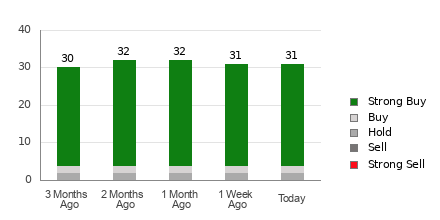Bank of America Reports $1.2 Million Lobbying Efforts in Q1 2025
Bank of America Corporation disclosed $1,200,000 in lobbying expenditures for the first quarter of 2025, as reported in a recent Lobbying Disclosure Act filing.
Key Issues Addressed in Lobbying
The bank focused its lobbying efforts on a variety of financial topics, including:
- S. 875, Financial Integrity and Regulation Management (FIRM) Act: Provisions related to supervision and anti-money laundering (AML) reforms.
- Fair Access and the Credit Card Competition Act.
- Overdraft rulemaking and credit card late fees from the Consumer Financial Protection Bureau (CFPB).
- Federal Reserve discount window and the Electronic Funds Transfer Act.
- International tax reform and IRA tax incentives.
- S. 394, Guiding and Establishing National Innovation for U.S. Stablecoins (GENIUS) Act of 2025, covering digital assets and stablecoins.
- H.R. 2392, Stablecoin Transparency and Accountability for a Better Ledger Economy (STABLE) Act of 2025, addressing similar digital asset issues.
- SEC regulatory proposals concerning market structure.
- Reauthorization of the Cybersecurity Information Sharing Act and the SEC Cyber Incident Disclosure Rule.
For additional insights into corporate lobbying, visit Quiver Quantitative.
Congressional Trading Activity in BAC Stock
Recent trading activities show members of Congress have engaged with Bank of America (BAC) stock twice in the past six months. This includes one purchase and one sale.
For a detailed breakdown of congressional trading activities involving $BAC over the last six months, check out Quiver Quantitative’s trading dashboard.
Institutional Investor Moves in BAC Stock
In the latest quarter, 1,338 institutional investors increased their holdings of BAC stock, while 1,413 reduced their positions. Notable changes in shareholdings include:
- BERKSHIRE HATHAWAY INC: Reduced by 117,449,720 shares (-14.7%) in Q4 2024, valued at approximately $5,161,915,194.
- DODGE & COX: Decreased by 22,147,719 shares (-41.6%) in Q4 2024, valued at about $973,392,250.
- JPMORGAN CHASE & CO: Increased by 20,479,708 shares (+13.7%) in Q4 2024, valued at approximately $900,083,166.
- ARROWSTREET CAPITAL: Reduced by 19,653,417 shares (-66.5%) in Q4 2024, valued at around $863,767,677.
- BLACKROCK, INC.: Increased by 18,853,021 shares (+3.7%) in Q4 2024, valued at approximately $828,590,272.
- WELLINGTON MANAGEMENT GROUP: Increased by 18,705,125 shares (+39.6%) in Q4 2024, valued at about $822,090,243.
- CAPITAL WORLD INVESTORS: Increased by 17,031,143 shares (+23.9%) in Q4 2024, valued at around $748,518,734.
For more details on hedge fund activity, visit Quiver Quantitative’s institutional holdings dashboard.
Recent Analyst Ratings for BAC
Over the past several months, Wall Street analysts provided input on $BAC, with 7 firms issuing buy ratings and none issuing sell ratings. Highlights include:
- UBS: “Buy” rating issued on 04/16/2025.
- Morgan Stanley: “Overweight” rating issued on 04/07/2025.
- Oppenheimer: “Outperform” rating issued on 01/03/2025.
- Wolfe Research: “Outperform” rating issued on 01/03/2025.
- Evercore ISI: “Outperform” rating issued on 01/02/2025.
- Citigroup: “Buy” rating issued on 12/24/2024.
- Wells Fargo: “Overweight” rating issued on 10/30/2024.
For tracking analyst ratings and price targets for BAC, see Quiver Quantitative’s forecast page.
BAC Price Targets from Analysts
In the last six months, analysts set various price targets for $BAC, with a median target of $52.0. Recent price targets include:
- Stephen Biggar from Argus Research: Target price of $47.0 on 04/16/2025.
- Robert W. Baird analyst: Target price of $50.0 on 03/07/2025.
- Betsy Graseck from Morgan Stanley: Target price of $54.0 on 01/07/2025.
- Chris Kotowski from Oppenheimer: Target price of $54.0 on 01/03/2025.
This article is not financial advice. For more information, please see Quiver Quantitative’s disclaimers.
This article was originally published on Quiver News, read the full story.
The views and opinions expressed herein are the views and opinions of the author and do not necessarily reflect those of Nasdaq, Inc.

